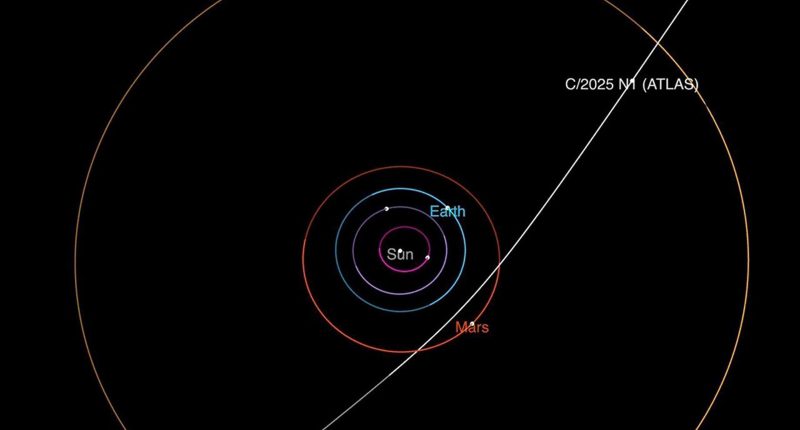Share this @internewscast.com
CAPE CANAVERAL, Fla. — NASA has discovered an interstellar comet that’s wandered into our backyard.
The space agency detected a rapidly moving object using the Atlas telescope located in Chile earlier this week, confirming it to be a comet from a different star system.
It’s officially the third known interstellar object to pass through our solar system and poses no threat to Earth.
“These objects take millions of years to travel from one stellar neighborhood to another, meaning this comet has possibly been journeying through space for hundreds of millions, or even billions, of years,” expressed Paul Chodas, director of NASA’s Center for Near Earth Object Studies, on Thursday. “We are unsure and unable to predict which star it originated from.”
This latest celestial visitor is currently 416 million miles (670 million kilometers) away from the sun, situated around Jupiter, and is approaching us at an incredible velocity of 37 miles (59 kilometers) per second.
NASA said the comet will make its closest approach to the sun in late October, scooting between the orbits of Mars and Earth – but closer to the red planet than us at a safe 150 million miles (240 million kilometers) away.
Astronomers around the world are monitoring the icy snowball that’s been officially designated as 3I/Atlas to determine its size and shape. Chodas told The Associated Press that there have been more than 100 observations since its discovery on July 1, with preliminary reports of a tail and a cloud of gas and dust around the comet’s nucleus.
The comet should be visible by telescope through September, before it gets too close to the sun, and reappear in December on the other side of the sun.

This diagram provided by NASA/JPL-Caltech shows the trajectory of interstellar comet 3I/ATLAS as it passes through the solar system.
NASA/JPL-Caltech via AP
Based on its brightness, the comet appears to be bigger than the first two interstellar interlopers, possibly several miles (tens of kilometers) across, Chodas said. It’s coming in faster, too, from a different direction, and while its home star is unknown, scientists suspect it was closer to the center of our Milky Way galaxy.
The first interstellar visitor observed from Earth was Oumuamua, Hawaiian for scout, in honor of the observatory in Hawaii that discovered it in 2017. Classified at first as an asteroid, the elongated Oumuamua has since showed signs of being a comet.
The second object confirmed to have strayed from another star system into our own – 21/Borisov – was discovered in 2019 by a Crimean amateur astronomer with that name. It, too, is believed to be a comet.
“We’ve been expecting to see interstellar objects for decades, frankly, and finally we’re seeing them,” Chodas said. “A visitor from another solar system, even though it’s natural – it’s not artificial, don’t get excited because some people do … It’s just very exciting.”
Copyright © 2025 by The Associated Press. All Rights Reserved.

















